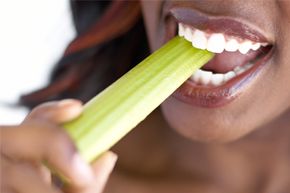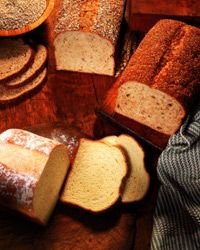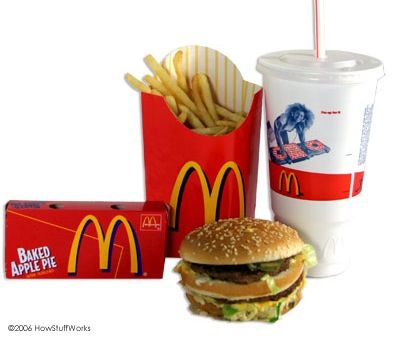Celery makes me happy. It's a cheerful yet understated shade of green. It's easy to pack in a lunchbox. And it has a satisfying crispness to every bite. What's not to love? Actually, there is one thing. The inevitability that whenever I snack on celery, someone nearby chimes in with two little words: negative calories.
I've never given much thought to the idea that eating celery was akin to a workout, but the "negative calorie" refrain is certainly a popular one. So, is there really such a thing as a negative-calorie food? The concept hinges on the idea that you burn more calories to eat and digest a food than the food actually has. The negative-calorie concept maintains, for example, that if you eat 10 calories of celery but burn 20 calories while doing so, you've entered into the negative-calorie zone [sources: Moskovitz].
Advertisement
The truth is, all foods contain calories, and as you ingest those calories you'll rev up your body's metabolic process. Some foods, like celery, watercress, cucumbers, mushrooms and sprouts, happen to be quite low in calories. That's where the thermic effect of food comes into play — it's the increase in metabolic rate that occurs after you eat. But the idea that it can play a role in maintaining or losing weight hasn't been well researched.
Five to 10 percent of the calories you burn every day are spent digesting food. Theoretically, it could be possible to eat only extremely low-calorie foods and then rely on the thermic effect to use up most of the calories you ingest, but this extreme diet would likely have a negative effect on your health over the long term [source: Hensrud]. The reality is that you expend about 11 calories per hour chewing, and a few more calories digesting food and storing nutrients. In general, it takes more calories to digest protein and carbohydrates than it does fat, but, even then, the difference doesn't amount to many calories.
Remember the celery scenario? Let's say you spend an hour eating 225 calories worth of celery (about 30 stalks). An hour of chewing would burn 11 calories, and it would require up to 20 additional calories to digest the celery. Subtract the amount of calories you expended from the calories you ingested, and it doesn't take long to realize that what's left over (194) doesn't exactly put you in the negative-calorie zone [source: Produce for Better Health Foundation].
Advertisement


